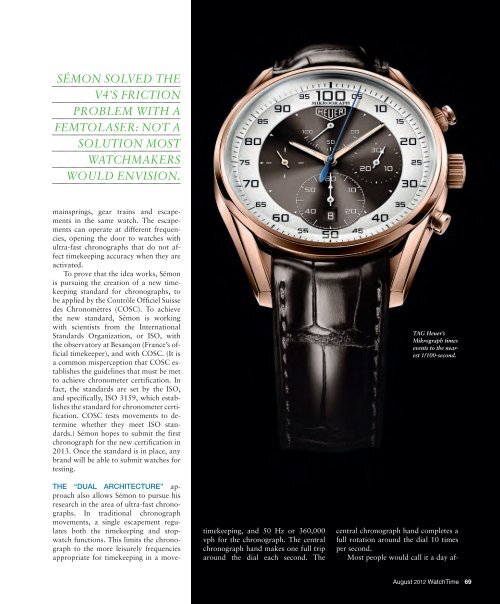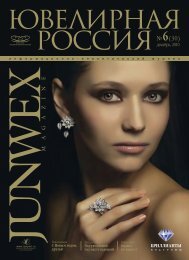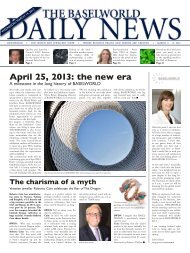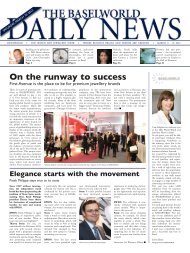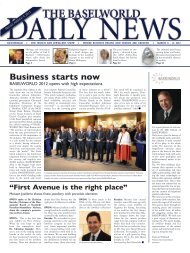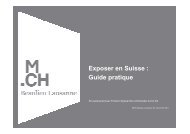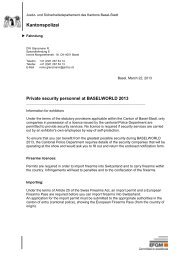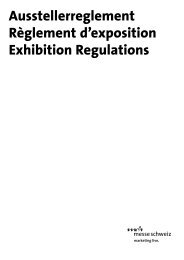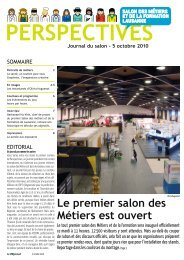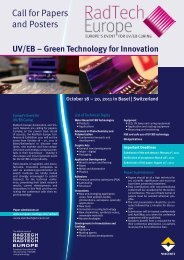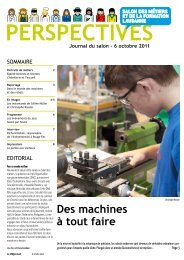WatchTime - August 2012
WatchTime - August 2012
WatchTime - August 2012
You also want an ePaper? Increase the reach of your titles
YUMPU automatically turns print PDFs into web optimized ePapers that Google loves.
SÉMON SOLVED THE<br />
V4’S FRICTION<br />
PROBLEM WITH A<br />
FEMTOLASER: NOT A<br />
SOLUTION MOST<br />
WATCHMAKERS<br />
WOULD ENVISION.<br />
mainsprings, gear trains and escapements<br />
in the same watch. The escapements<br />
can operate at different frequencies,<br />
opening the door to watches with<br />
ultra-fast chronographs that do not affect<br />
timekeeping accuracy when they are<br />
activated.<br />
To prove that the idea works, Sémon<br />
is pursuing the creation of a new timekeeping<br />
standard for chronographs, to<br />
be applied by the Contrôle Officiel Suisse<br />
des Chronomètres (COSC). To achieve<br />
the new standard, Sémon is working<br />
with scientists from the International<br />
Standards Organization, or ISO, with<br />
the observatory at Besançon (France’s official<br />
timekeeper), and with COSC. (It is<br />
a common misperception that COSC establishes<br />
the guidelines that must be met<br />
to achieve chronometer certification. In<br />
fact, the standards are set by the ISO,<br />
and specifically, ISO 3159, which establishes<br />
the standard for chronometer certification.<br />
COSC tests movements to determine<br />
whether they meet ISO standards.)<br />
Sémon hopes to submit the first<br />
chronograph for the new certification in<br />
2013. Once the standard is in place, any<br />
brand will be able to submit watches for<br />
testing.<br />
THE “DUAL ARCHITECTURE” approach<br />
also allows Sémon to pursue his<br />
research in the area of ultra-fast chronographs.<br />
In traditional chronograph<br />
movements, a single escapement regulates<br />
both the timekeeping and stopwatch<br />
functions. This limits the chronograph<br />
to the more leisurely frequencies<br />
appropriate for timekeeping in a move-<br />
ment designed to operate continuously<br />
for years on end. A 4 Hz, or 28,800<br />
vph, escapement may be fine for telling<br />
the time of day, but it limits the chronograph<br />
to 1/8-second increments. Sémon<br />
and his team are designing mechanical<br />
chronographs that can split<br />
seconds into 1/100-second and even<br />
1/1,000-second and beyond.<br />
Sémon’s first fast chronograph – the<br />
Carrera Mikrograph – can time events<br />
to the nearest 1/100-second. Introduced<br />
in January 2011, it features twin<br />
barrels powering separate gear trains<br />
and twin escapements with different<br />
frequencies – 4 Hz or 28,800 vph for<br />
timekeeping, and 50 Hz or 360,000<br />
vph for the chronograph. The central<br />
chronograph hand makes one full trip<br />
around the dial each second. The<br />
TAG Heuer’s<br />
Mikrograph times<br />
events to the nearest<br />
1/100-second.<br />
Mikrograph is being produced in a limited<br />
series of 150 pieces, priced at<br />
$50,000. (See the Mikrograph review<br />
in this issue.)<br />
In March 2011 at Baselworld, TAG<br />
Heuer launched Sémon’s second baby,<br />
the Mikrotimer Flying 1000, the<br />
world’s first 500 Hz mechanical<br />
chronograph, capable of timing events<br />
to the nearest 1/1,000-second. Like the<br />
Mikrograph, it features separate mainsprings,<br />
gear trains and escapements<br />
for the timekeeping and chronograph<br />
functions. At 500 Hz, or 3.6 million<br />
vph, it is 125 times faster than a standard<br />
28,800 vph chronograph. The<br />
central chronograph hand completes a<br />
full rotation around the dial 10 times<br />
per second.<br />
Most people would call it a day af-<br />
<strong>August</strong> <strong>2012</strong> <strong>WatchTime</strong> 69


